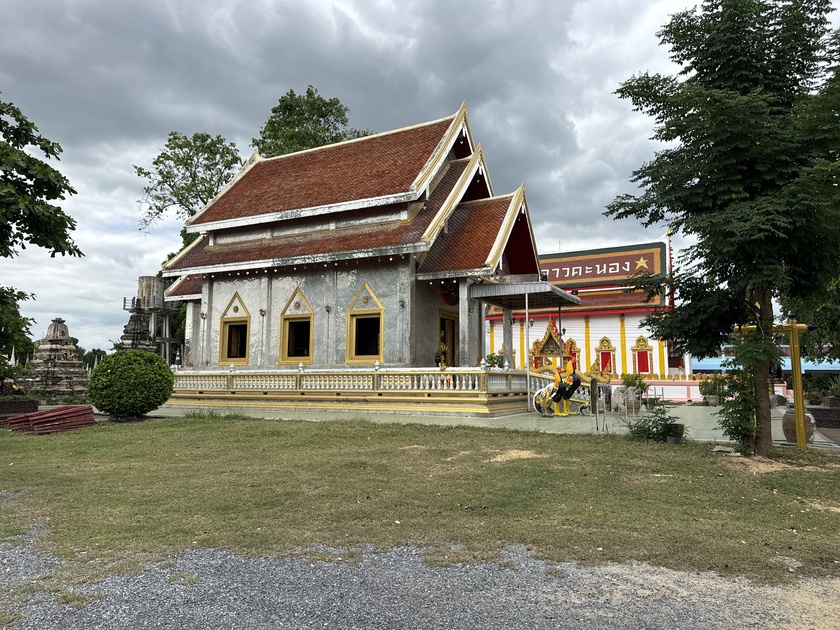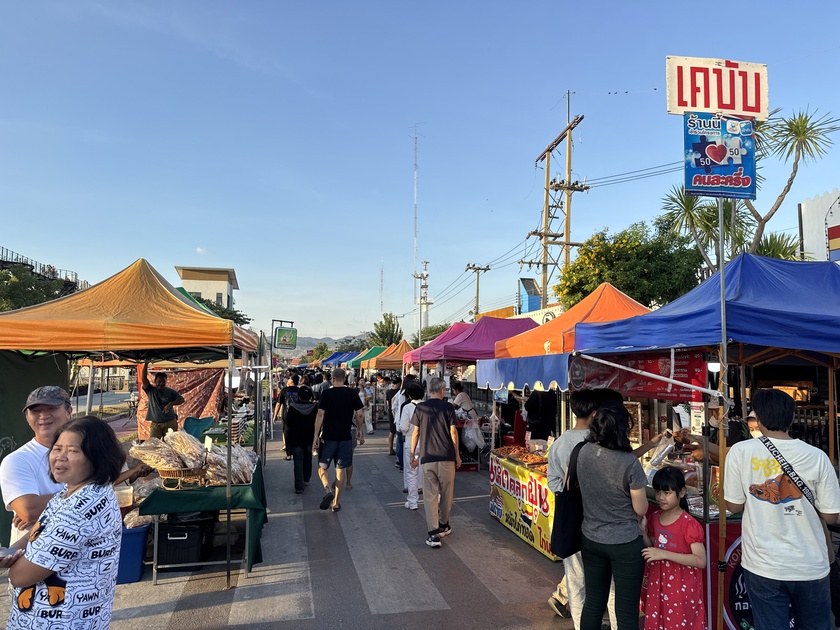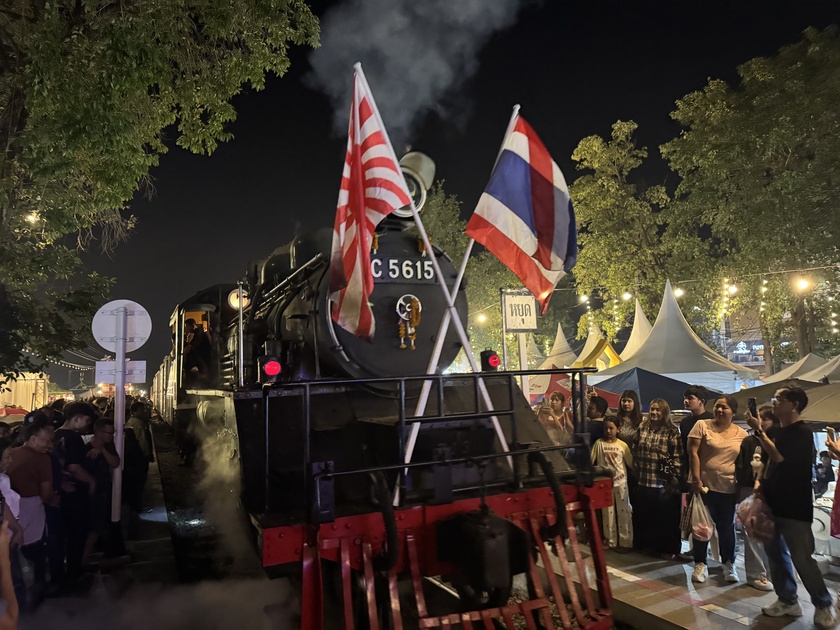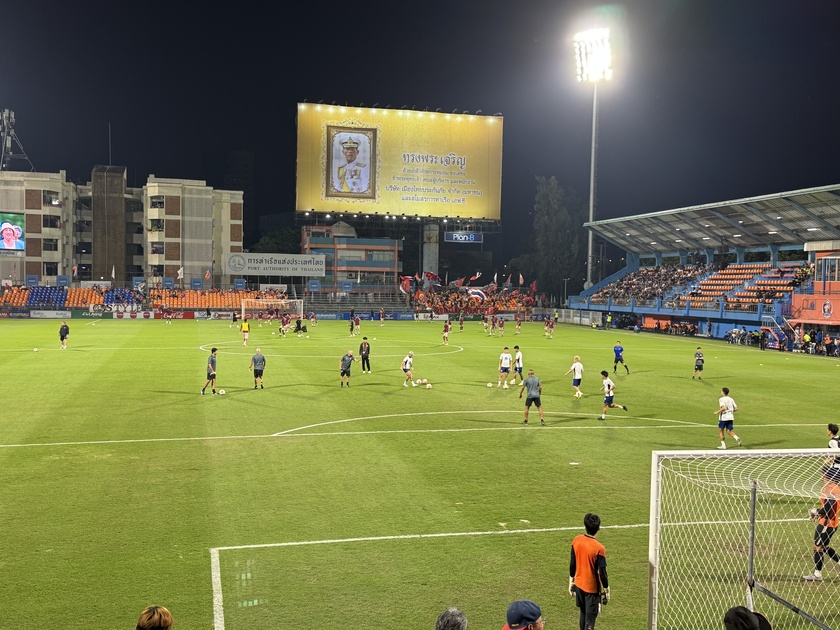Wat Dao Khanong วัดดาวขันธง, translating to the “Monastery of the Wanton Stars,” is an active Buddhist temple situated north of Ayutthaya’s city island in the expansive Pho Sam Ton fields. It lies in the Pho Sam Ton sub-district of Bang Pahan district, Ayutthaya Province, Thailand. Positioned on the east bank of Khlong Muang and the north bank of Khlong Chang—both remnants of the ancient Lopburi River course—the temple stands opposite the ruins of Wat Pho Sam Ton.
The temple’s main vihara (assembly hall) enshrines the principal Buddha image, known as Luang Pho Tho Wat Pak Khlong, a large seated figure measuring 4 meters across the lap in the “Conquest of Mara” (Maravijaya) posture, symbolizing the Buddha’s triumph over temptation.
While the site maintains traditional elements, specific architectural details beyond this image are modest, reflecting its role as a living monastery rather than a grand ruin. The grounds blend active worship spaces with subtle historical ...
Night markets are part of Thai culture and it’s a great way for friends and family to meet up for dinner or snacks away from the heat of the day.
Each Saturday evening a huge walking street night market opens next to the skywalk on the River Kwai in downtown Kanchanaburi. It’s about 1km of shops selling everything from local snacks to clothing and much more.
It’s known as Kanchanaburi Walking Street and Song Kwai Night Market. It is a popular place for the locals and tourists to spend an evening. Prices are very reasonable and it’s a must see if you are in the area.
Kanchanaburi Walking Street Night Market - Song Kwai Market - Thailand 2025
The Bridge Over the River Kwai Light and Sound Show is a part of the River Kwai Bridge Week Festival, which is held annually from late November to early December. The event commemorates the lives lost during World War II and features various activities, including folklore shows.
The River Kwai Bridge is an iron bridge that runs across the upper part of the Mae Klong River, which joins with the Khwae Noi tributary. Due to popular misassociation with the Khwae Noi, that section of the Mae Klong was subsequently renamed Khwae Yai. The bridge was part of the Thai-Burma Railway that ran from Ban Pong, Thailand to Thanbyuzayat, Myanmar. The railway, most of which had been dismantled after World War II, had served as a military supply route for Imperial Japanese troops.
The light and sound show is an audio-visual performance that showcases the legacy of the bridge events during the war.
The performance is presented beautifully visually, allowing viewers to follow the story, especially if they know the ...
Port FC vs Uthai Thani FC: Thai League 1 Matchup – December 7, 2025
The Thai League 1 encounter between Port FC and Uthai Thani FC occurred on December 7, 2025, at PAT Stadium in Bangkok, Thailand. This Round 14 fixture featured Port FC (7-3-3, 24 points, 3rd place) against Uthai Thani FC (3-5-5, 14 points, 10th place) in a contest that showcased Port’s offensive prowess against Uthai Thani’s determined but leaky defense. Kickoff was at 7:00 PM with a lively atmosphere fueled by Port’s dedicated “The Port” fan group.
Port FC emerged victorious with a 3-1 win, extending their unbeaten streak and solidifying their top-tier aspirations. The hosts controlled the tempo, outshooting Uthai Thani despite a brief equalizer. The first half saw Port take the lead in the 24th minute when Peeradol Chamratsamee slotted home after a clever assist from Worachit Kanitsribumphen (1-0). Uthai Thani leveled in the 74th minute through William Weidersjö’s opportunistic strike (1-1), but Port quickly ...



















































